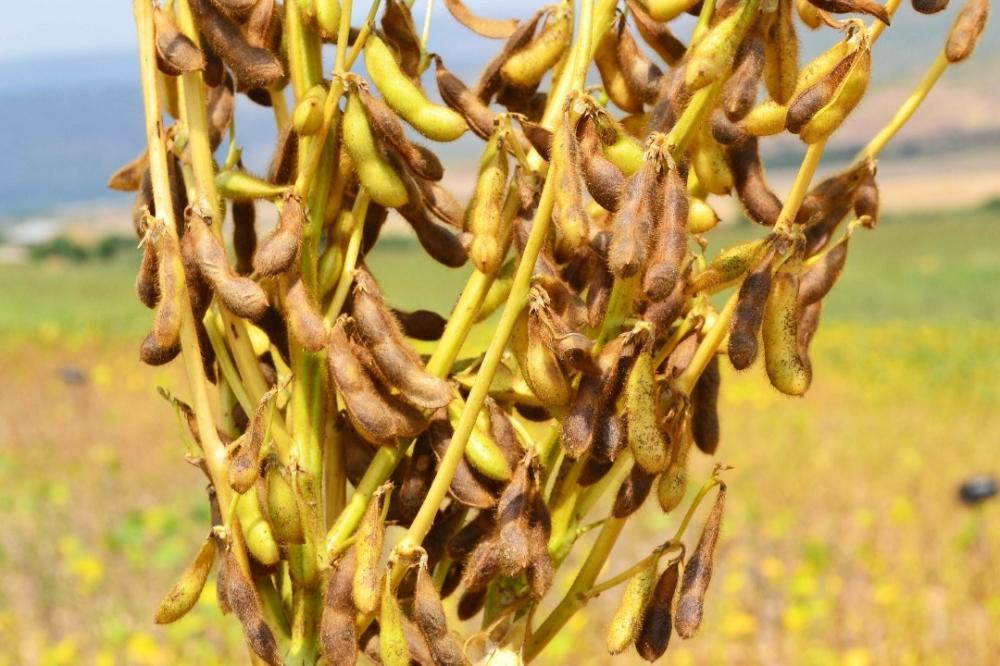Africa-Press – Rwanda. Rwanda’s soybean production is set to increase by more than 46 per cent from 36,220 tonnes in 2024 to 53,019 tonnes in the fiscal year 2026/27, according to the Rwanda Agriculture and Animal Resources Development Board (RAB).
Florence Uwamahoro, Deputy Director General in charge of agriculture development at RAB, told The New Times that the production target will be achieved by disseminating five new soybean varieties, among other agricultural practices.
“The new five varieties have undergone various evaluations and will be released soon. Currently, RAB has eight varieties in dissemination that were released in 2021,” she said.
Uwamahoro highlighted that the scaling up of the varieties will be done through dissemination and awareness campaigns, working with different actors in the value chain, including seed multipliers, processors, and off-takers, among others.
The dissemination of the five varieties, Uwamahoro added, will also be carried out through the establishment of demonstration plots across the country.
The five varieties are suitable for low and mid-latitudes, which means they can be grown in all districts in the Eastern Province, the districts of Rusizi and Nyamasheke along the Kivu belt, and most of the Southern Province, except for some high-altitude areas in Muhanga, Nyamagabe, and Nyaruguru districts.
“They can also be grown in some parts of Gakenke and Rulindo that are not in high-altitude areas, but the varieties’ trials took place across various agro-ecological zones and at three RAB stations: Rubona, Ngoma, and Nyagatare,” she explained.
According to RAB, there is a need for high-yielding, pest and disease-resistant, early-maturing varieties with high protein and oil content.
Demand for soybean
Uwamahoro indicated that increased soybean production is needed “because there is an emerging demand for soybean, especially for infant food production, animal feed production, and cooking oil production.”
Similarly, Rwanda is focusing on investing in farming soybean and processing it to reduce the import bill for cooking oil, as well as improve the country’s trade balance.
With new investments, the country hopes to gradually reduce cooking oil imports, which peaked at 126,002 metric tonnes last year, up from 121,981 metric tonnes in 2019.
Rwanda produces at least 80,000 metric tonnes every year and imports an average of 125,000 metric tonnes, making it a net importer of cooking oil.
Animal feed in the country has been a critical issue due to high demand and fluctuating prices, as most of the feed is imported to feed the growing population of pigs, poultry, and fish.
Soybeans are also highly needed for infant food production, as the government seeks to reduce the stunting rate among children to 15 per cent by 2029, down from 19 per cent in 2024.
Most farmers who produce soybeans usually alternate maize due to the weather.
Xavier Bahizi, a soybean farmer, did not produce any soybean this season due to adverse weather conditions. With the new variety, he hopes to grow soybean the following season with expectation that the yield will be better.
“This season, the weather was not favorable, and our produce was much lower than expected. The yield didn’t turn out well, but we’re hopeful that the new variety will help pay off,” he said.
Amani Karwa, another soybean farmer with over six years of experience and a member of COPROMASA cooperative operating in Gatsibo district, acknowledged that while soybean production had been on the rise in recent years, the previous season’s harvest was disappointing due to poor rainfall.
“The last season wasn’t good because of the rain, but we’re hopeful that the new varieties will make a big difference. We haven’t received them yet, but we’re waiting and believe it will be an improvement,” he noted.
For More News And Analysis About Rwanda Follow Africa-Press






